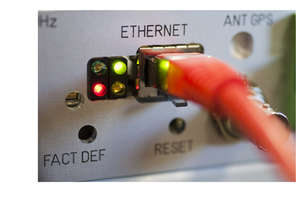Innovation and technological progress
Innovation and technical progress in the time management service
When Brillié becomes Gorgy Timing
For over 40 years, Gorgy Timing® French SMEs, recognized technology leader in this highly specialized business, designs, manufactures and markets digital clocks, schedules modular stations and time servers. Gorgy Timing® has since its establishment in advance technologically. It is at the forefront in terms of performance, and also responsible pleasure.
It becomes a preferred partner of international consulting firms in terms of safety and traceability schedule. It exports over 60% of its turnover mainly from France and through its three subsidiaries: Barcelona (Spain), Karlsruhe (Germany), and more recently Yantai (China).
In 1997, Gorgy Timing® resumes Brillié® brand and manufacturing electromechanical analog clocks, and so perpetuates this expertise centenary.
 Anticipating needs
Anticipating needs
Our business has followed and often anticipated developments in transmission methods (impulse, coded, PPS, NTP, PTP, DHW) and external synchronization sources (radio transmitters, GPS, and soon Galileo).
In parallel to our continuous operation clocks in case of disruption, we have developed quartz time bases for increasing accuracy.
The company's technological progress
In 40 years, Gorgy Timing, a staunch defender of standardized and secure synchronization has developed quartz time bases compatible with international market requirements.
| Synchronizing with a time base reference | 1974 | Impulse time distribution: a master clock transmits a telephone pair polarized pulse of 1 second every minute. This technology, still used for small installations, was established in 1920 by Shone. |
| 1987 | The distribution of coded normalized time (AFNOR NFS 87500 code) was born in 1987 under the leadership of Gorgy Timing. This mode of transmission wire is the most used in the world. | |
| Wireless synchronization | 2001-2004 | Distribution of wireless synchronization standard time Wireless (DHW) can synchronize a network of clocks without connecting a cable. The 869 Mhz standard time message emitted by France Inter, DCF, NTP or GPS is regularly relayed to clocks through our RADIO TIMING terminal. |
| 2001 | Time synchronization on ETHERNET and WIFI networks: With the NTP protocol, a LEDI NETWORK time server or 4000 station RT transmits the time information to the ETHERNET network. The clocks continuously receive and display all the same hour as the corporate IT. | |
| Network synchronization | 2013 | Mixed time distribution: NTP + AFNOR A LEDI NETWORK time server or 4000 RT Central synchronizes the entire computer network with the NTP protocol. The LEDI NETWORK IN capture the time on the ETHERNET network and send the message AFNOR NFS 87500 every second by wired connection to receiver clocks. |
| 2013 | Mixed time distribution: NTP + DHW: A LEDI NETWORK time server or time center RT 4000 synchronises the entire IT network through the NTP protocol. RADIO TIMING NETWORK terminals pick up the time on the Ethernet network and rebroadcast by radio to independent clocks. |
Key dates in the innovation of the company
Gorgy Timing® has adapted to changes in its business through technological innovation in harmony with the new computer networking standards. The company has made the most fervent defender of international standards for standardized time of transmission modes for greater transparency for the customer satisfaction.
 2014/2018: Research on SCPTime® Collaborative project
2014/2018: Research on SCPTime® Collaborative project- 2011: Development time servers NTP V4 new generation IPV6
- 2010: Marketing a master clock with timer, connected to Ethernet
- 2008: Released on the market for digital LED clocks LEDI new generation new design, new technology (use of bi-color LEDs to show the time in 3 different colors)
- 2006: Development of the 869 MHz radio synchronization, and Wi-Fi for radio-controlled clocks that sync without son.
- 2005: The RT3000 gives way to a new generation modular time center. Marketing and RT4000 time servers LEDI NETWORK ITS.
- 2003: Designing a complete range of NTP time servers, servers LEDI NETWORK
- 1999: First experience with the NTP protocol and market research.
- 1996: Development of skills in the field of IT and networks. Creating a range of analog clocks / HANDI to needles (acquisition of Shone brand).
- 1990: Development of the first modular central zone RT3000, and a specific master clock to the markets of broadcasts: LEDI 1 / S / RK Broadcast
- 1987: Acceleration of R & D and registration code AFNOR NFS 87500 (standard hourly Code)
- 1986: Creation of the range of LEDI digital clocks (Digital Clocks diode / LED)
- 1976: Complete overhaul of time distribution system to RADIO FRANCE Paris
